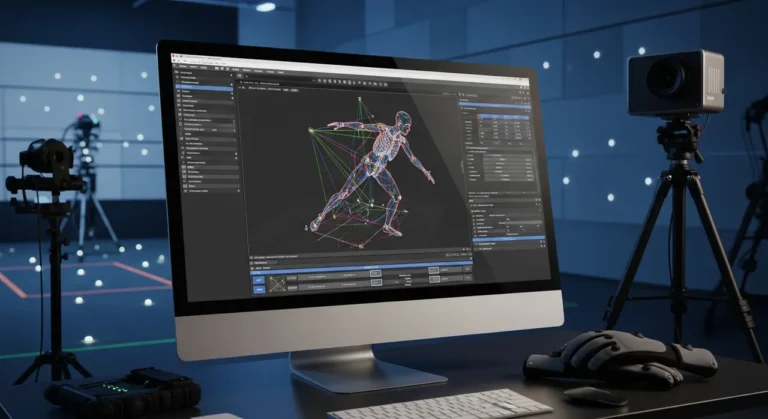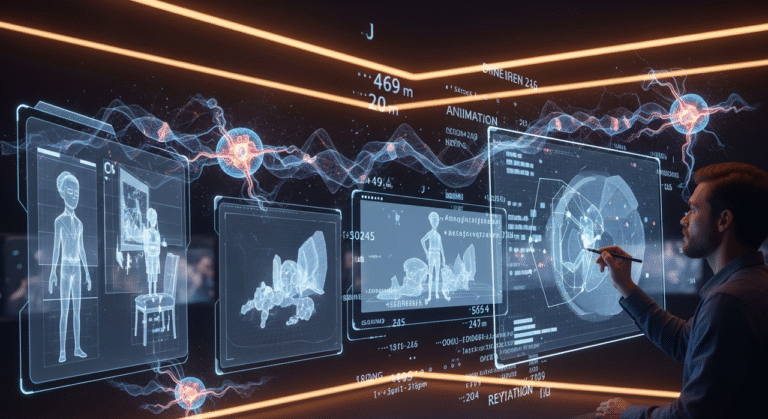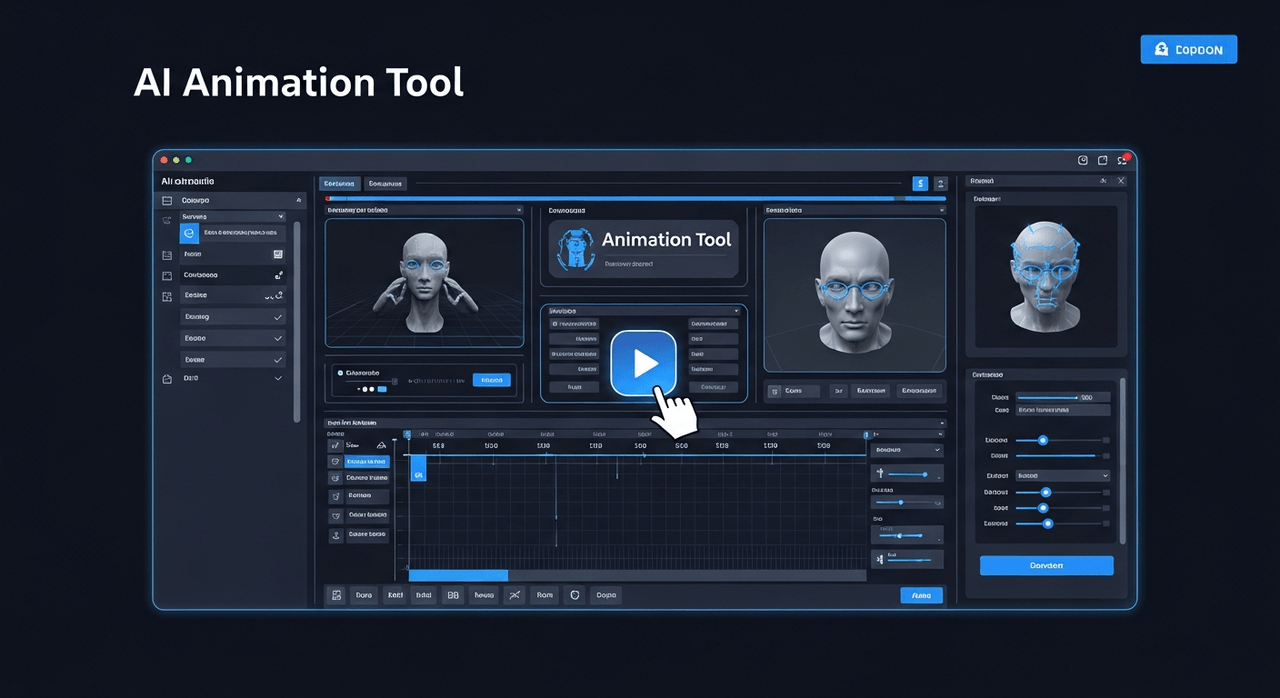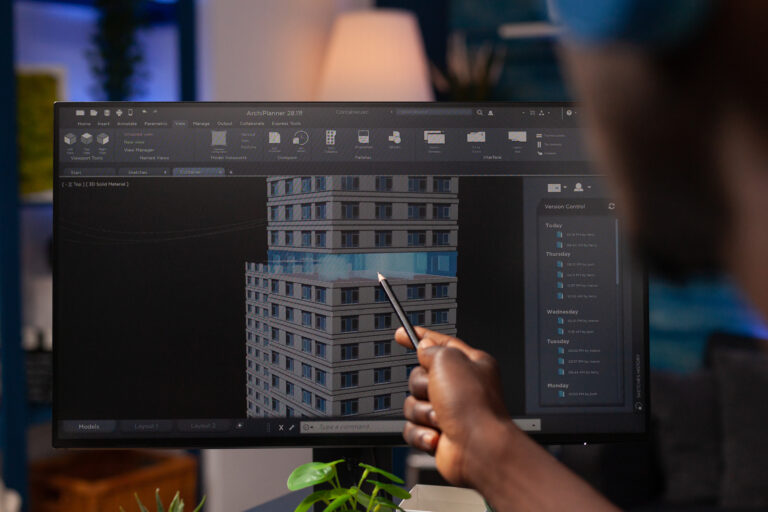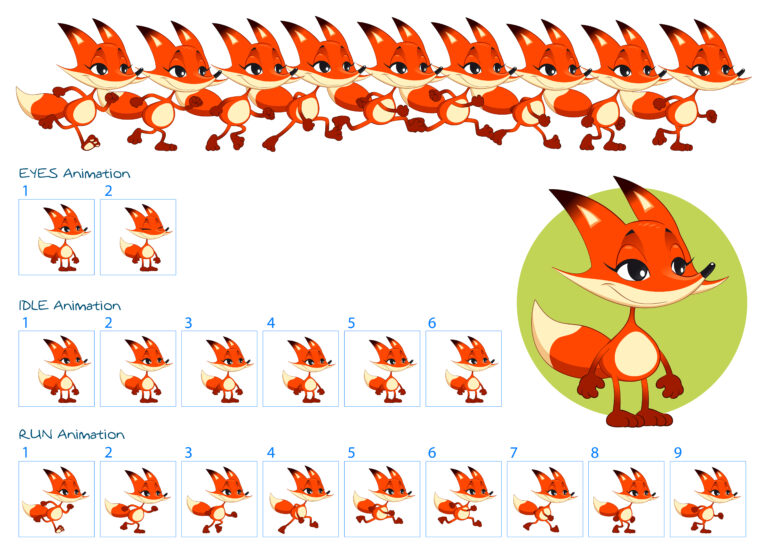Human anatomy is the scientific study of the structure and organization of the human body, examining the physical form and relationships between body parts, organs, and systems. No matter how long you’ve been creating art, there’s a good chance you tend to get better. Realistic art is a skill that takes a lifetime to master, but mastering human anatomy is the one that will put you on the fast track to success.
You might question the need to study the human body if you’re an artist. However, having the appropriate foundation is essential—especially for professionals working in fields like animation services, where anatomical accuracy brings characters to life. Understanding human anatomy for artists will convert your 3D creations, paintings, or sketches from average to realistic. After reading this blog, you’ll understand the necessity of learning human anatomy.

Need Animation Services?
Visit our Animation Service page to see how we can help bring your ideas to life!
Why Does Human Anatomy Matter?
Understanding anatomy is essential for all artists, especially those attracted by the human body. You can design and create the figure without using a reference if you understand how the body moves and works. It helps you to be able to draw the body to feel natural and alive. Character development is often an essential part of honing your skills, regardless of whether you’re a sculptor, concept artist, painter, or choose another form of medium for your works.
Although you may have moved past the “stick figure” stage of character creation, are you satisfied with how your characters look? Many creatives cannot advance over their current level of proficiency because they are stuck there. You’ll need human anatomy as the proper foundation if you wish to improve your character design. Human Anatomy also helps you out if you are an animation modeler or you produce 3D animation services.
It is essential to understand human anatomy to create realistic-looking designs and movement patterns in drawings, paintings, or digital characters. Because they cannot determine each muscle group’s start and stop points, most painters cannot create a realistic human figure. You’ll be able to create a lifelike human figure once you understand each muscle group and how it connects to the skeleton. To understand the fundamentals of the human body, you don’t have to be a doctor. You only require a simplified, basic understanding.
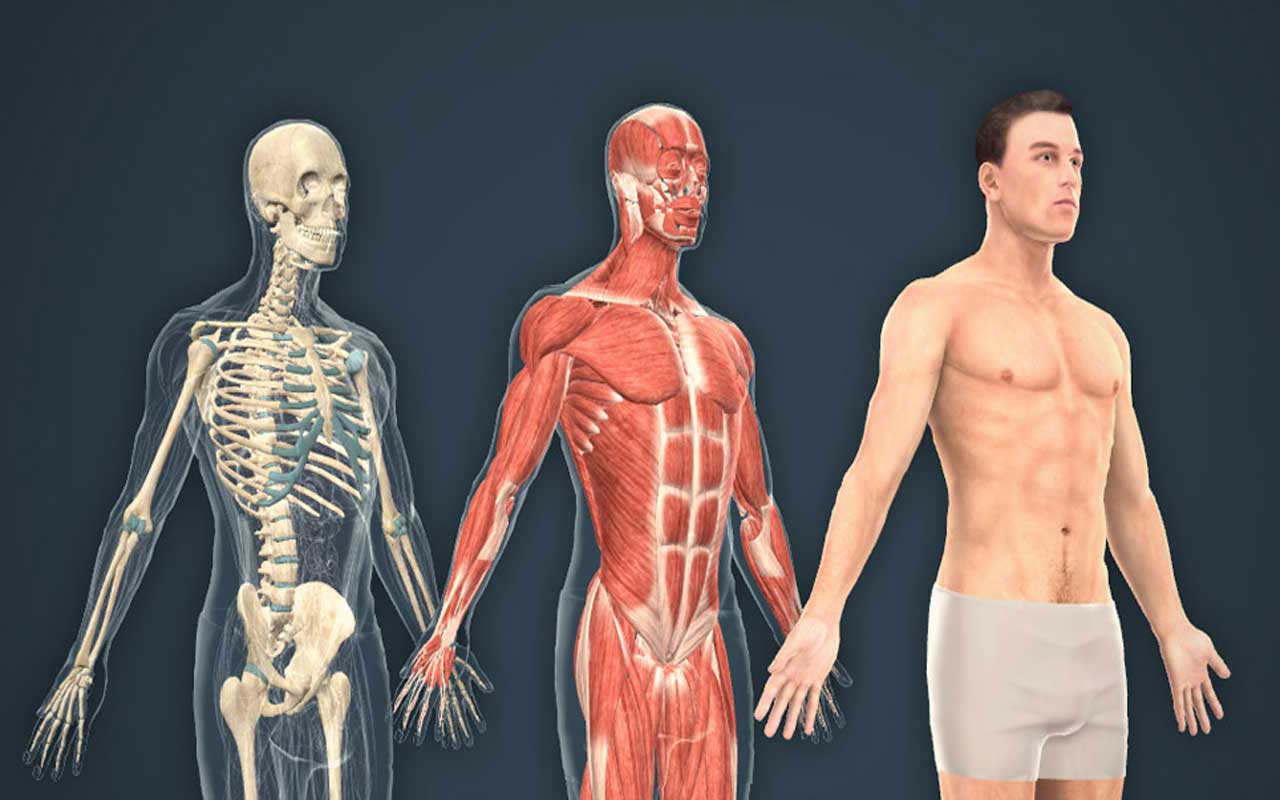
When you want to design a character, there shouldn’t be any area of the body that you don’t understand. If anything is a mystery, you won’t be able to represent it properly without copying it or just inventing things. With knowledge, you can design the body to make changes.
You can choose what to emphasize, what to leave out, and what to add that isn’t noticeable in the reference. You are no longer a slave to the reference once you have the power to change it. Likewise, you can apply it as needed. Additionally, you can produce your own original artwork that fits your vision and the narrative you’re trying to convey—something especially valuable in 2D animation services, where expressive and stylized characters still require anatomical grounding.
There won’t be a model that resembles the Hulk or a zombie; such a thing would have to be created. As a result, you can create anything you want with a high understanding and imagination. Not only does anatomy knowledge enable you to draw from memory or imagination, but it also makes it easier to represent the human body in a realistic, believable, and alive way.
History of Anatomy
Leonardo da Vinci was the first individual to study skinless cadavers. The human form was the primary topic of painting during the late Middle Ages and the Renaissance. Investigations on creating the most accurate depiction resulted from this intense curiosity about the figure. Leonardo da Vinci devoted himself entirely to studying human anatomy, even by engaging in illegal dissections. Soon after Leonardo’s passing, surface anatomy became a permanent component of artists’ training. Apprentices had to draw pictures of human figures that had been flayed (écorchés). The pioneer in this subject was Leonardo. Check out this video to figure out anatomy more precisely.
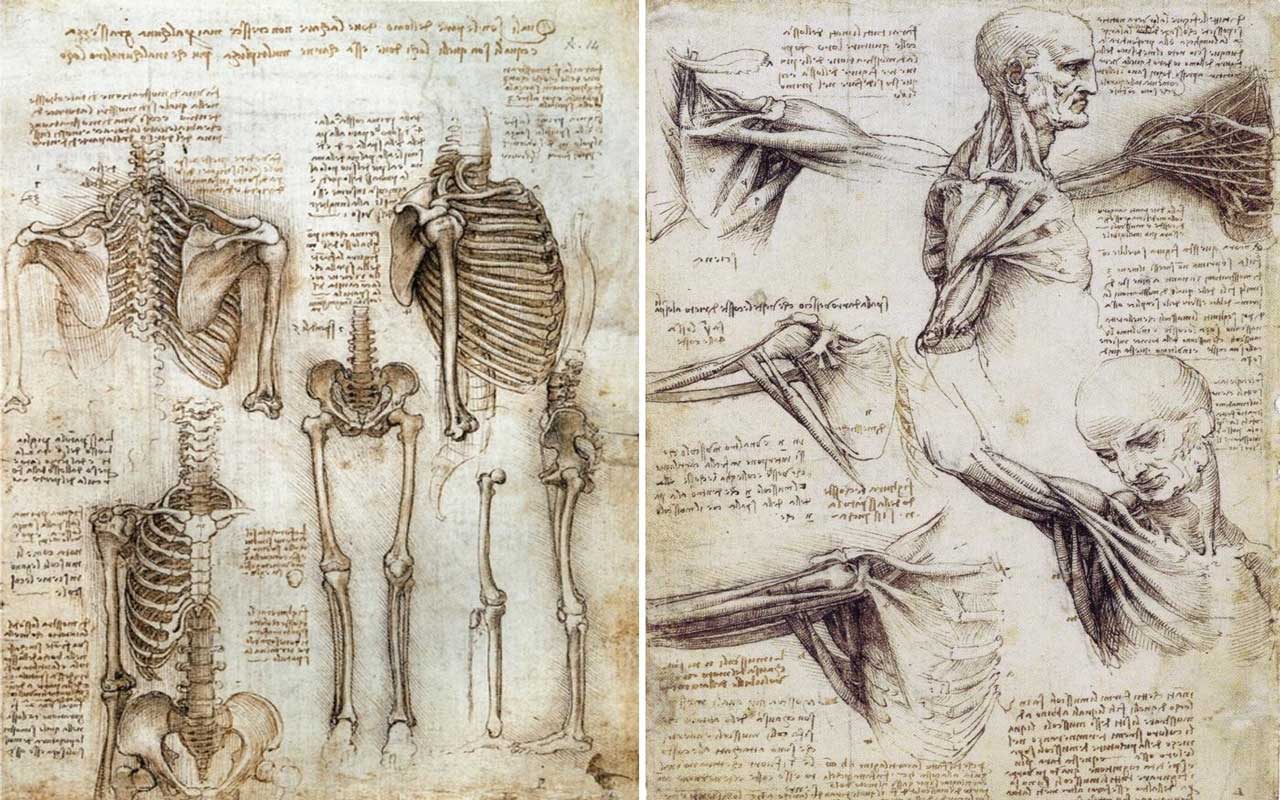
Anatomy and the Science of Movement
Movement brings anatomy to life. Understanding how muscles and bones work allows you to create believable action in your models. From gestures through complex motion, this chapter uncovers the science of movement in the human body.
How Muscles Work Together in Motion
Muscles do not work alone. If one muscle tightens, its opposite must lengthen. Understanding how muscles work together allows you to make more natural, flowing poses. For example, when the bicep tightens, the tricep lengthens, creating a balance that makes believable action.
Anatomical Principles Behind Walking, Running, and Jumping
Every movement has a ripple effect. Walking utilizes hip rotation, weight transfer, and arm swing. Running involves more forceful muscle utilization, especially in the thighs and calf regions. Jumping involves explosive movement by the hamstrings and glutes. The mastering of these movements creates realistic action scenes.
How to Study Anatomy
Since you are just interested in the visible details of anatomy, you do not need to study it in as great detail as a doctor would. Unless you intend to depict a zombie, you don’t need to learn deep muscular systems that don’t affect surface forms. Focusing alone on the figure’s front, side, and back forms is insufficient. To be able to visualize the figure moving in any way you can think of, you must fully understand how the muscles work. Consequently, you need to study anatomy in three dimensions. The human body is a very complex arrangement of bones and muscles. The balance of the body as a whole can be affected by a small change. As a result, it is better to start from the skeleton.
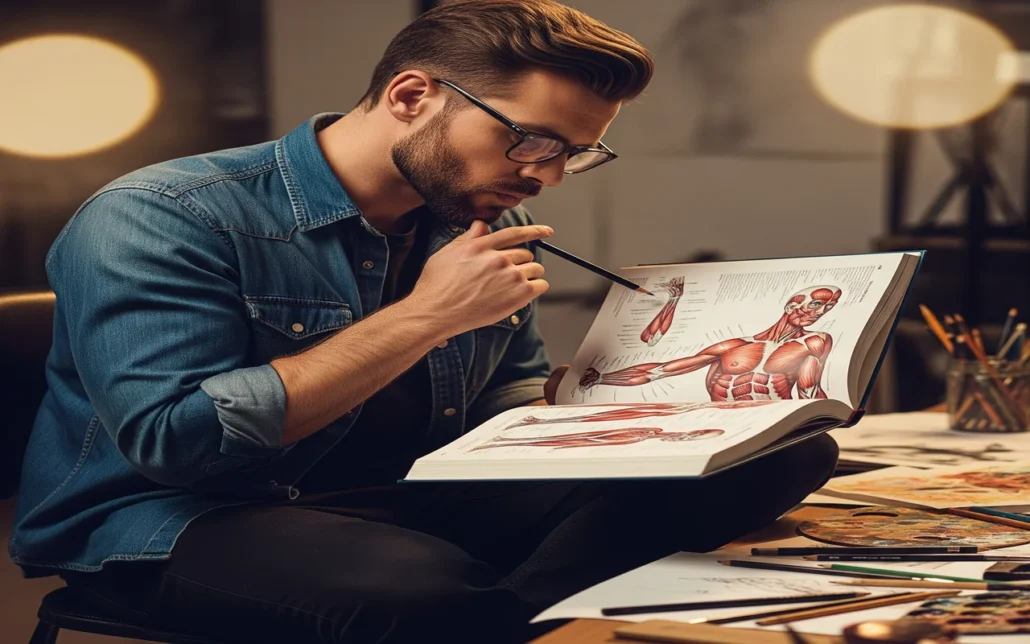
Two Aspects of Human Anatomy
Learning anatomy isn’t just about memorizing bones and muscles—it’s actually learning how each bit interacts with the other to create, function, and structure. From skeleton to muscle activity, or proportions to gender and somatotypes, each of these topics adds depth to your characters. This section breaks down the major anatomical areas that every artist must study in order to be able to draw realistic, expressive, and proportionate characters.
The Skeleton
The best starting point is a bare-bones beginning, no pun intended. The skeleton serves as the framework for the body’s muscles. You may learn the fundamental structure of the body, how it moves, and how it maintains stability by first studying the skeleton (balance). You need to be able to comprehend the skeleton’s three-dimensional form. Obtain a location where you can rebuild the skeleton in any way you like. You don’t have to draw every bone when sketching up different skeletons in various situations. Instead, concentrate on the most crucial factors that directly affect your figure’s shape.
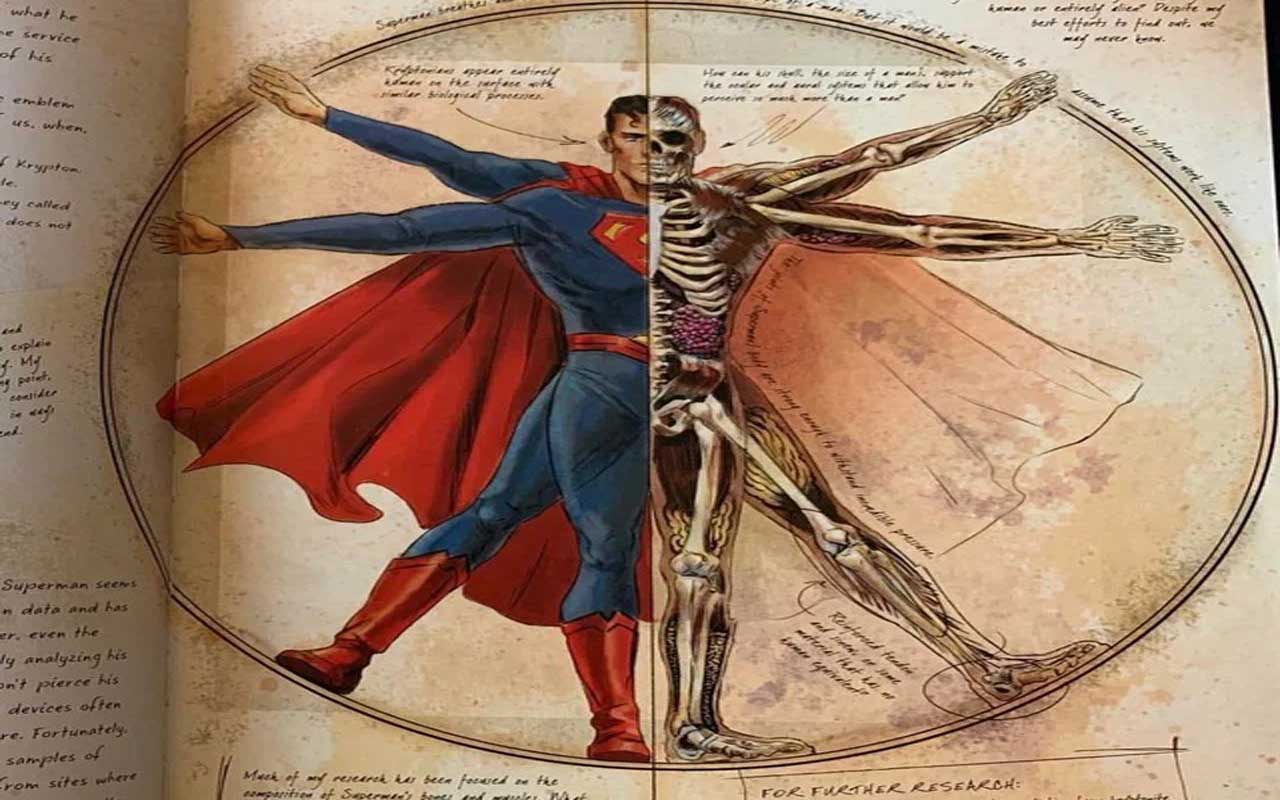
Movement and Muscles
You can move on to muscles once you have a good understanding of the skeletal shape in three dimensions. Examine how the muscles’ shape changes as the figure move. Study each superficial muscle in detail so that you can picture how the figure will appear in different poses.
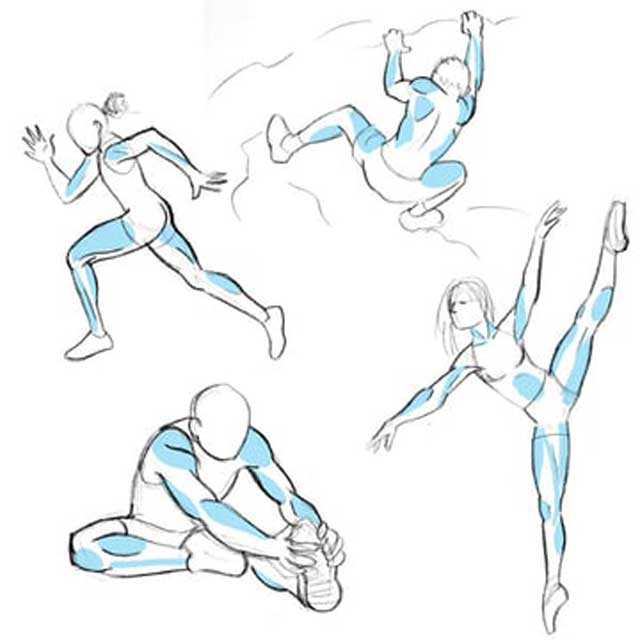
You need to be able to create your own figures without using a reference. You will be able to visualize the exact position of the arms and legs as well as the shape of the muscles if you want to be able to sketch a figure tossing a baseball, for instance.
Understanding Planes and Volumes in Human Anatomy
Learning how the body is constructed of basic forms is important before getting into detailed anatomy. Knowing planes and volumes allows artists to break up tough shapes, establish light and dark, and draw figures that appear solid and three-dimensional, even on a page.
How Planes Define Form and Light
Planes are the flat or curved surfaces that create the shape of the body. Having an understanding of how these planes twist in space enables artists to control the direction of light and shadow on the figure. This understanding makes drawings appear more real and three-dimensional despite being two-dimensional.
Sculptural Thinking in 2D Art
Sculptural thinking is visualizing the human body as if you were going to model it from clay. Instead of sketching lines, you build the figure in volumes—torso blocks, arm cylinders, and joint spheres. This mode of thinking permits building depth and shape in 2D artwork.
How to Design a Character Based on Human Anatomy
Here are some of the most common anatomical concepts and principles we can use to visualize video game characters. First, one of the most crucial factors you must consider is body proportions. This differs significantly in nature based on several variables. It is improbable that two similar people have the same anatomical measurements. However, general guidelines support character design and the proportions of the human anatomy.
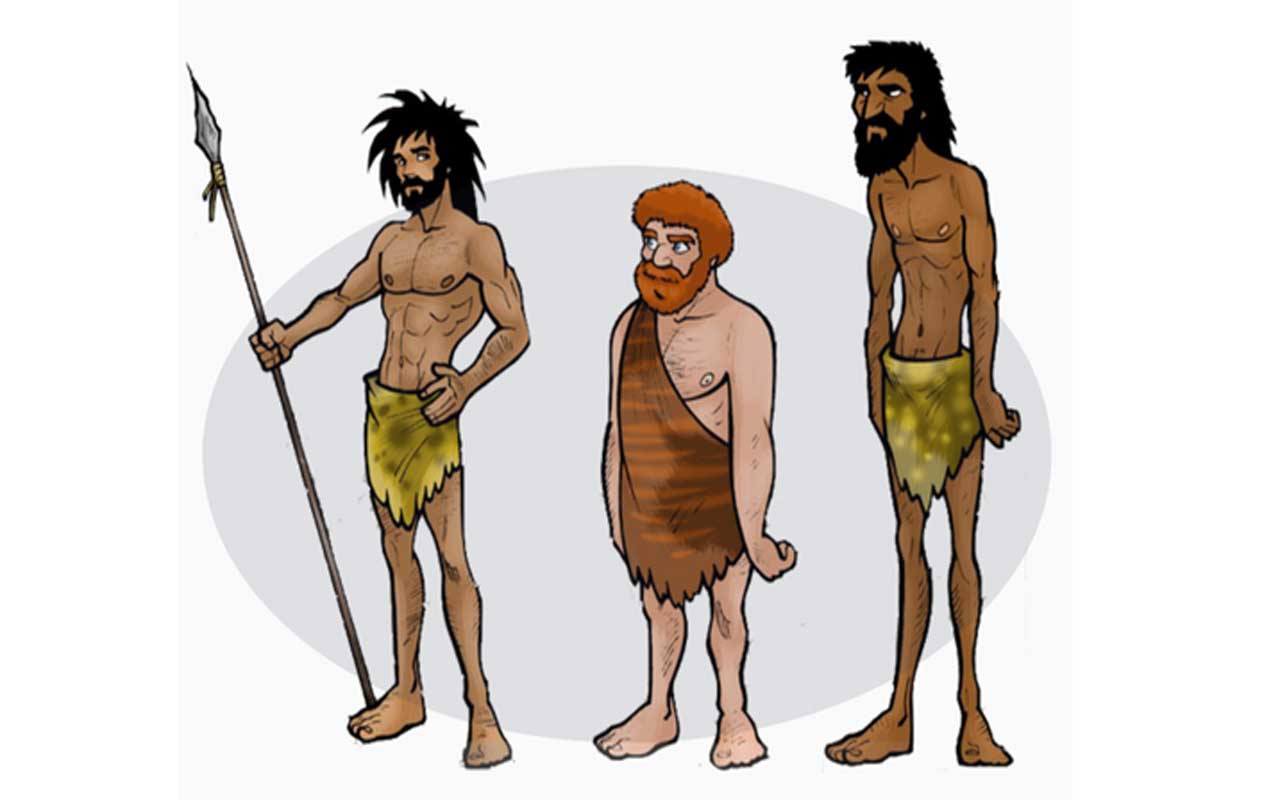
The Head Height
Character artists mostly use the head height—the distance between the top of the head and the chin—as a basis for comparison. This is a principle of art in many respects, but it also reflects careful life observation. It is also one of the simplest ways of making sense of what might be a highly complex character image because the critical unit of measurement is contained within the image itself. An ideal character is thought to be about eight heads heights tall altogether. The ratio can be reduced as characters get younger, down to about four head heights for infants. However, this is a simplification of reality.
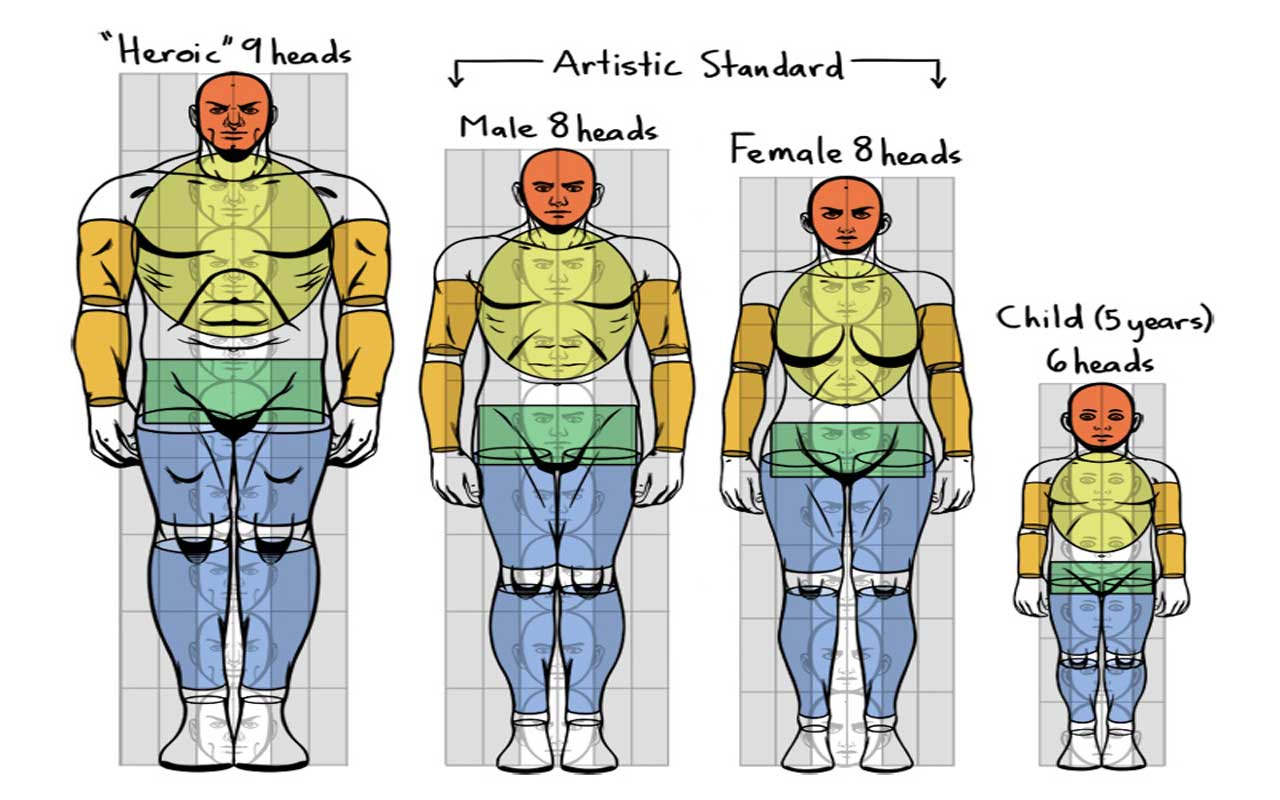
Somatotype (Ectomorph, Mesomorph, and Endomorph)
One of the most popular classification systems focuses on how much fat and muscle the body stores. The ectomorph, mesomorph, and endomorph are the categories used to categorize body types based on these features and are referred to as somatotypes.
Character designers that need to generalize a character’s overall body shape might employ these, which are highly generalized and not entirely based on human biology and anatomy. The ectomorph’s character is light, with small bones and toned, thin muscles. Due to their rapid metabolism, they are likely to have slim shoulders and low body fat. They may also have long limbs or be taller than typical.
Mesomorphs are those characters that are more solidly built and have larger bones. They probably have an athletic body naturally; even if they have some body fat, their muscles will be bigger and more visibly defined. In addition, persons more closely associated with ectomorph or mesomorph kinds will find it easier to lose weight than endomorph characters, who will have a higher body fat ratio to muscle.
Somatotypes can appeal to our biases and fundamental assumptions of body shape when used and emphasized in the character design of video games. Ectomorphs, like Waluigi, might be related to traits like speed, thoughtfulness, introversion, emotional control, shiftiness, intensity, or creativity, for example.
Characters with endomorphic characteristics, like Wario, are often shorter, rounder, and stockier. They may also have powerful arms and legs. Depending on how an endomorph is characterized, this body type may imply that a person is funny, carefree, sociable, understanding, adoring, or strong. The mesomorph character type definitely denotes athletic ability and power. Still, it can also denote bravery, adventure, assertiveness, domination, competition, and a tendency to take risks.
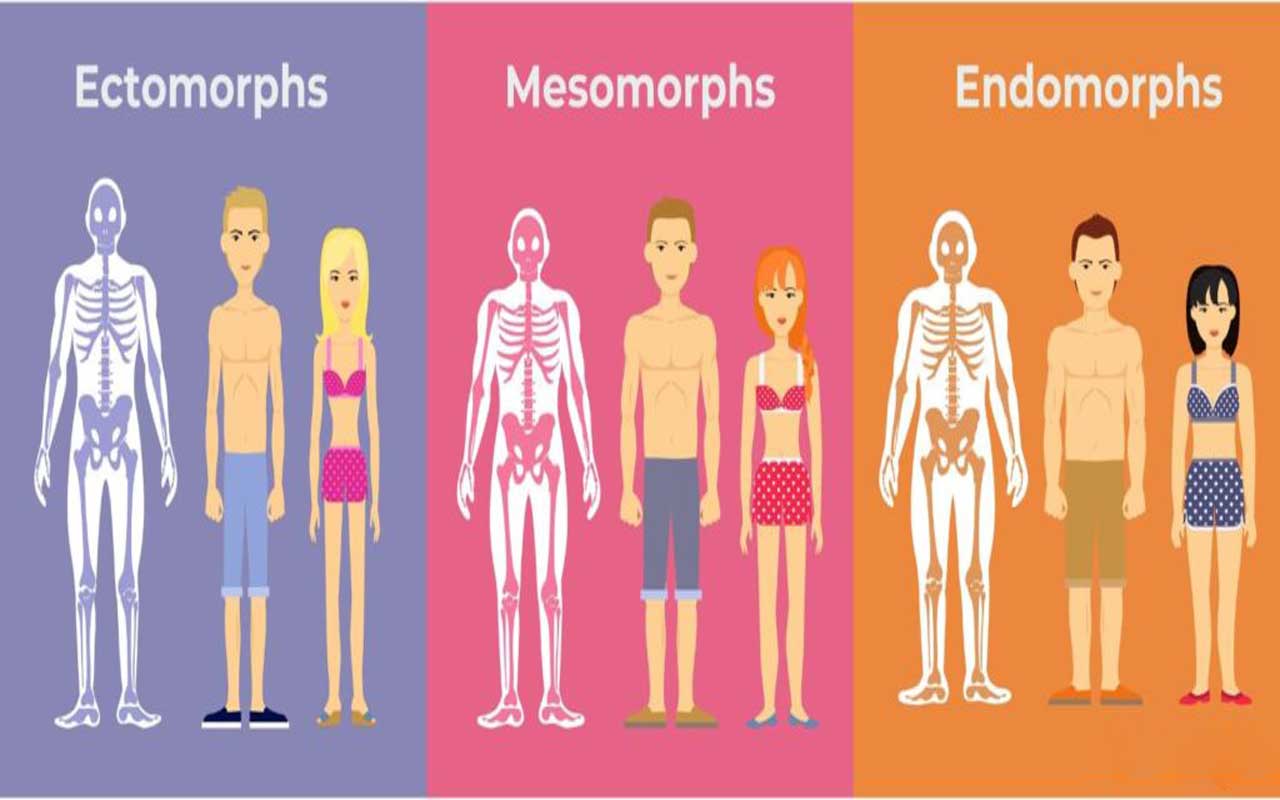
Gender
Character sex obviously affects body shape, and while somatotypes can be used to generalize character shape, we must also be aware of this. Testosterone and estrogens are the sex hormones found in nature that affect the body and facial structure. Females usually have a higher proportion of estrogens than testosterone, whereas men typically have a considerably higher proportion of testosterone.
This results in minor changes in body size and shape in nature, which we generally understand as characteristically male or feminine traits. First, let’s think about the characteristics seen as being very manly. A steroid hormone called testosterone increases body mass, including bone and muscle mass, resulting in larger and heavier bodies.
Men tend to acquire larger muscles more quickly, have larger hands and feet, and are taller and stronger than women because men have a higher percentage of testosterone in their bodies than women. A highly masculine body would resemble the mesomorph body type and be tall and broad across the chest with well-defined muscles and low body fat, levels of testosterone and masculinity were correlated.
In short, our analysis and design of gaming characters rely heavily on our understanding of general anatomical principles. This can be simplified by considering how somatotypes might infer different character’s implications, how sex hormones change the form of our bodies and faces to more or less masculine and feminine aspects, and how body proportion impacts our perception of a character’s age.
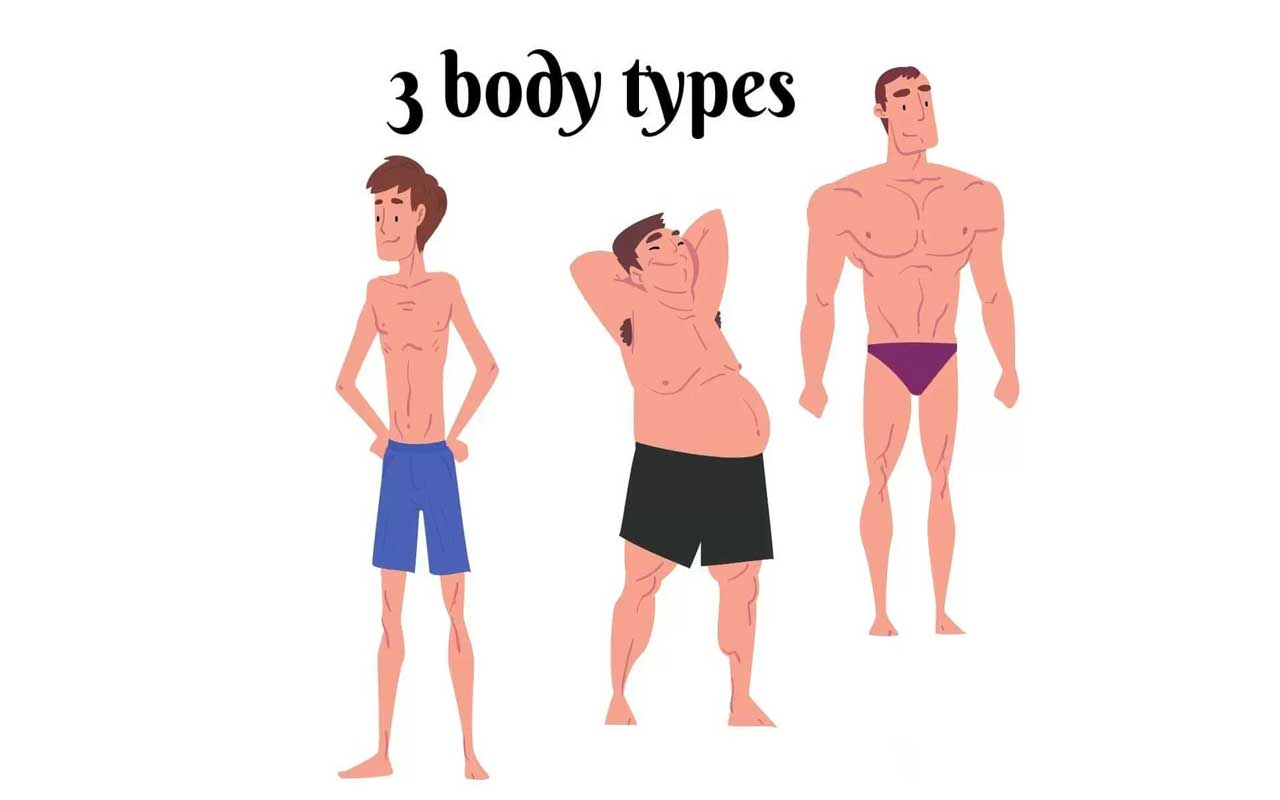
Proportion Rules Across Ages and Body Types
Human proportions vary by age and from one individual to another. Accommodating anatomy for kids, teens, grown-ups, and seniors is required to have believable characters. It also helps to stylize or enlarge the characters without losing coherence.
Drawing Children, Teens, Adults, and the Elderly
Proportions differ for different ages. Kids have larger heads relative to their bodies, yet adults have more defined muscle masses and longer limbs. Aging bodies characteristically have sagging skin and decreased tension in their muscles. Proportional adaptation based on age adds to the extent of realism as well as character depth.
Adapting Proportions for Unique Character Designs
When designing special creatures—like giants, dwarves, or aliens—basic human proportions are still a sound basis. Messing around with limb length, torso width, or head-body proportions based on rules of anatomy maintains even the most whimsical creations readable and graspable.
Anatomy for Different Art Styles
Regardless of your style of art—realistic, cartoony, or in between—anatomy will make your work better. This section discusses how anatomy is relevant to all styles and how artists can be faithful to structure while being expressive.
From Realism to Stylization — How Anatomy Translates Across Styles
No matter if you’re doing hyper-realistic characters or stylized characters, anatomy is what it’s all about. When doing realism, every muscle and proportion has to be accurate. With stylized art, the same information allows you to exaggerate and simplify intentionally, but not lose credibility.
Cartoon, Comic, and Fantasy Characters with Anatomical Accuracy
Even cartoon characters are improved by good anatomy. Superheroes and villains, or fancy creatures, look more real when their muscles and hinges rely on reason in the world around us. A well-placed collarbone or correctly bent knee adds substance and presence to even the most far-fetched sketches.
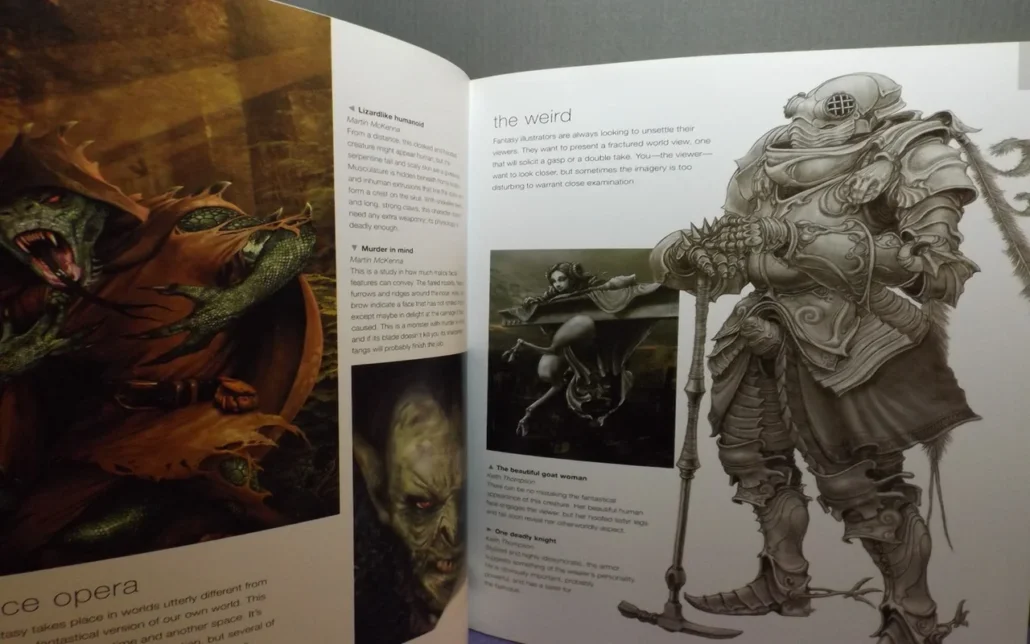
When to Break the Rules of Anatomy — And Why
Good artists understand when to play by the rules—and when to buck and play against them. Stylization, exaggeration, and abstraction are all choices that artists employ. In order to effectively break anatomy rules, though, you must first know them. Here’s how to do it with purpose.
Stylized Anatomy in Animation and Illustration
Exaggeration gives your art a distinctive style, but it has to be logical. Knowing the rules of anatomy allows you to break or deviate from them with intention, like extending limbs for animation or collapsing muscles for neat drawings, without losing form.
Artistic License vs. Mistake: Finding the Balance
Conscious stylization produces charm and personality; ignorant mistakes just look wobbly. It’s a matter of being so familiar with anatomy that when you do take liberties, it’s clear you did them for the influence—because you knew better, not because you didn’t.
Applying Anatomy in Concept Art and Game Design
In concept art and game development, anatomy makes your characters believable and powerful. Whether you are creating humans, hybrids, or monsters, anatomy helps you root your design and make them realistic.
Designing Creatures Based on Human Anatomy
By starting with human anatomy, you are able to create realistic fantasy creatures. Adding animal features like wings or tails is most believable when their juncture points follow real muscle and bone logic. This gives imaginative designs credibility.
How Anatomy Enhances Believability in Fantasy and Sci-Fi
Even in fantasy worlds, realistic anatomy grounds your characters. Fantasy battle warriors with prosthetic limbs or wizards with arms stretched out to absurd lengths still need realistic joints and movement flow. Realistic anatomy makes the impossible possible.
Best Resources to Learn Human Anatomy for Artists
With the right resources, anatomy is not so scary. From basic textbooks to visually structured online tutorials and interactive programs, this chapter points you in the right direction of how to master human anatomy as an artist.
Must-Read Anatomy Books and Sketchbooks
Anatomy for Sculptors, Figure Drawing: Design and Invention by Michael Hampton, and Atlas of Human Anatomy for the Artist by Stephen Rogers Peck are examples of books that give readily visible images and artist-friendly deconstructs of complex forms.
Online Courses and YouTube Channels for Visual Learners
Platforms like Proko, New Masters Academy, and channels like Marc Brunet and Love Life Drawing provide free and paid lessons tailored for artists. These graphical walkthroughs are perfect for beginners and advanced learners.
Anatomy Apps and 3D Tools for Practice
Software like Anatomy for Sculptors, Magic Poser, and Zygote Body offers interactive 3D anatomy models. These programs enable you to spin and study muscles from any angle and are ideal for practice and reference.
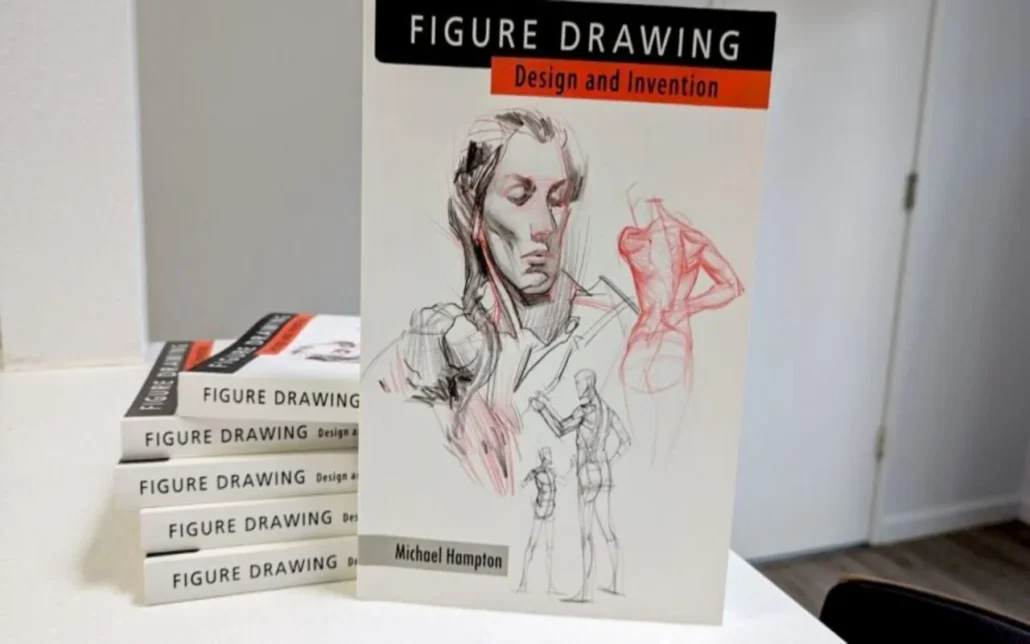
Practice Techniques for Mastering Anatomy
Anatomy is only half the battle—practice is where you truly master it. These practical techniques will help with memorization, accuracy, and muscle memory formation through drawing, referencing, and observation studies.
Gesture Drawing to Improve Muscle Memory
Gesture drawing is more specifically drawing movement and flow rather than detail. Doing quick sketches gets your eyes and hands to refer to the body in general. By practicing gestures daily, you can build confidence and establish muscle memory.
Using References Effectively Without Copying
Study life models or photographs to learn anatomy, but do not copy them. Look at the structure, gesture, and proportions, and then reconstruct the pose from another angle. This will build your internal knowledge instead of copying shapes.
Studying Anatomy Through Master Copies
Copying artwork from masters like Michelangelo or Bridgman illustrates how they were looking at anatomy. Notice the manner in which they had analyzed complicated forms in terms of simpler forms, and try applying those techniques to your own work.
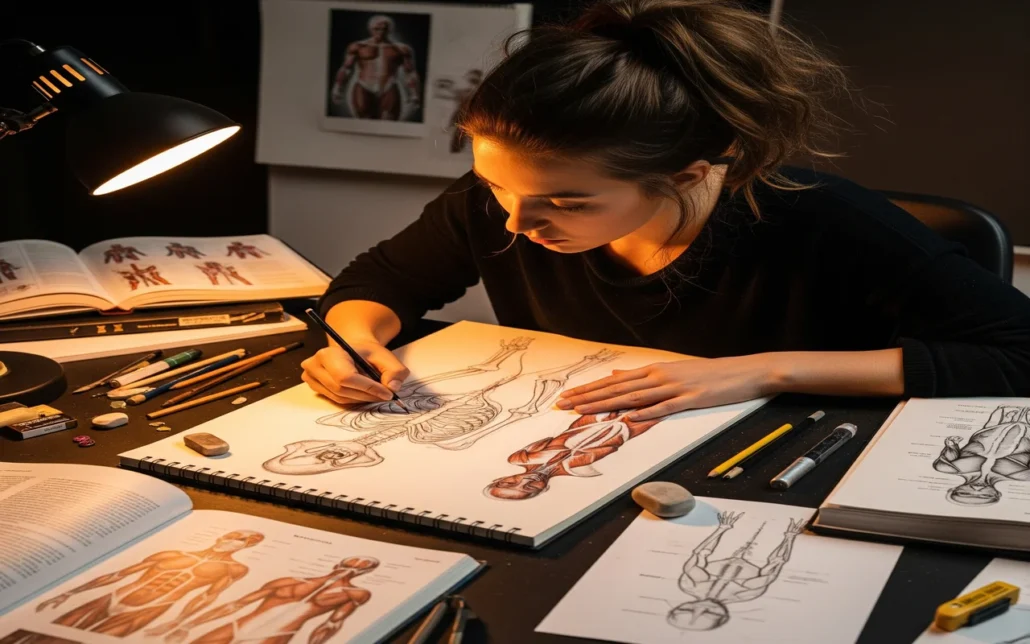
Common Mistakes Artists Make When Learning Anatomy
Anatomy is intimidating, and mistakes happen. Most artists misplace muscles, ignore bone structure, or get stuck in too much detail. Here, we present the most prevalent pitfalls and how to avoid them for faster results.
Misplacing Muscle Groups and Overcomplicating Details
A typical mistake is placing muscles in the incorrect positions or using excessive lines. Too many details can overwhelm your drawing and make the figure appear artificial. Mastering the major muscle groups first and working finer from there is preferable.
Ignoring Underlying Skeletal Structure
Not knowing bones beneath the skin, it’s easy to lose joints or stretch limbs out of proportion. The skeleton governs movement, balance, and form. Always start with the bone landmarks first and then add on the muscles.
To Conclude
Researching a body shape’s anatomical structure, whether a human, animal, invented creature, or machine, is essential to creating a unique character. The more you understand the structure of primary forms, the more adept you’ll get at drawing and designing your own creations and getting the proportions just right. Studying or understanding the human anatomy helps you in this stage.
FAQs
Why learn human anatomy as an artist?
Understanding anatomy helps you draw more lifelike figures, confident movement, and imaginative characters that feel real.
How much anatomy should artists learn?
You don’t need full medical details. Just grasp basic shapes, proportions, and how muscles and bones connect.
What are the top benefits of anatomy knowledge?
It enhances observation, technique, expressive storytelling, and opens career paths in art disciplines.
Which body parts are essential to study first?
Focus on the head, hands, and upper torso for the most anatomical impact with efficient learning.
What is an écorché study?
It’s a flayed figure revealing underlying muscles. Used as a study tool to understand the structure beneath the skin.
What is gesture drawing, and why is it helpful?
Quick sketches capturing movement and flow, improving understanding of joint range and muscle tension.
